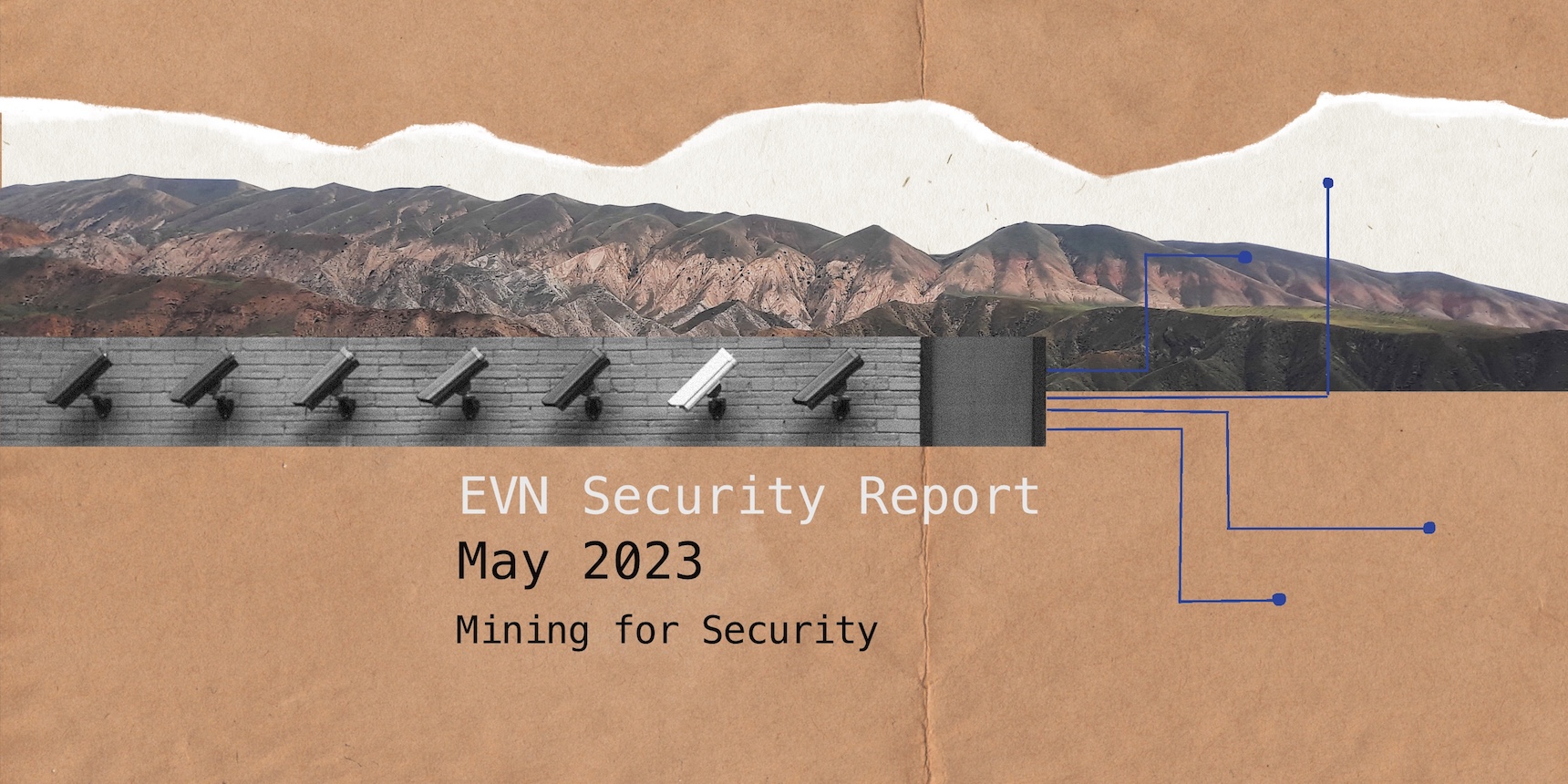

Armenia’s security environment in the month of May faced potential diminishing, with a set of attempted incursions by Azerbaijan and the subsequent kidnapping of two Armenian servicemen. However, the operational improvements in the frontlines and the Armenian military’s ability to robustly curtail Azerbaijan’s coordinated assaults produced the opposite outcome, thus indicating a relative improvement to the security context. These collective attempts to denigrate Armenia’s security environment developed in the background of the intensification of the negotiations process pushed forward by both the United States and the European Union. As Armenia stubbornly continued its posture of seeking peace, even in the face of Azerbaijan’s destabilization efforts, the Western negotiation track sought to pigeonhole Baku into engaging in constructive and good-faith negotiations. Since Armenia’s current security architecture relies on the diplomatization of its security to limit the scope of Azerbaijan’s aggressive demeanor, the progress in the Western-led negotiation track contributes to curtailing the magnitude of Baku’s penchant for initiating interstate militarized disputes. Thus, whereas Baku views the Western-led liberal peacebuilding process as an impediment to maximizing its position during negotiations, Armenia views this process as crucial to supporting its fragile security situation. To this end, Armenia continues to rigorously immerse itself in the peace process, going so far as recognizing Azerbaijan’s territorial integrity and thus negating Azerbaijan’s maximalist barriers to the peace process.
Parallel to these developments have been three important continuous structural reconfigurations to Armenia’s security context: a deeper decoupling with Russia, a more active American presence in partially filling the Russian vacuum, and Azerbaijan’s surgical attempts to disrupt the peace process by continuously targeting Sotk in eastern Armenia.
In the case of the deepening rift between Armenia and Russia, three different tiers of information were publicly shared by both civic society and the Armenian Government on Russia’s endeavor of weakening Armenia’s security capabilities. First, the Secretary of Armenia’s National Security Council, Armen Grigoryan, confirmed that not only has Russia failed to meet its bilateral and multilateral treaty obligations towards Armenia, but it has also failed to fulfill the terms of the several weapons procurement contracts for which Armenia has already paid Russia. Deputy Foreign Minister Mnatsakan Safaryan confirmed these developments, reifying that Russia refuses to deliver the weapons that Armenia has paid for. Second, considering the severity of Armenia’s security context, Yerevan has sought to remedy this problem by seeking alternative sources of arms supply, primarily through India. Concomitantly, in what has become an open secret, Russia has also obstructed this process as well, complicating Armenia’s ability to transport the weapons purchased from India into Armenia. And third, noting the depth of the rupture between the two countries and Russia’s amplified “strategic negligence” towards Yerevan, Prime Minister Nikol Pashinyan confirmed that leaving the CSTO is actively on Armenia’s agenda, considering the fact that the CSTO has basically “withdrawn from Armenia” and that the “needless status of a de-jure member of the CSTO would only hinder” Armenia from addressing its “security agenda with other countries,” including, but not limited to, the opportunity for arms acquisition.
In the space of more active American engagement, two important developments stood out in the month of May. The first development specifically pertains to the active role played by the United States, especially Secretary Blinken, in not only moving the negotiation process forward, but also aggressively encouraging both sides to commit to the liberal peacebuilding model. Noting that America’s, and by extension, the European Union’s, number one objective remains the crystallization of a sustainable and durable peace agreement, the more active involvement of the U.S. has produced three outcomes. One, it has pigeonholed the Aliyev regime into refraining from obstructionist and escalatory behavior, as it has become more than evident to everyone that Armenia remains the more devoted and invested actor of the two, while Baku has sought to cling to its maximalist posturing. Second, peace between Armenia and Azerbaijan would exponentially diminish whatever regional influence that Russia has, for it would denigrate Russia’s ability to engage in regional conflict management, thus decreasing Russia’s influence and leverage in the South Caucasus, especially upon Armenia. And third, the negotiation track has fundamentally become Western-led, indicating the role of the West as a stakeholder in the process, and the available instruments of the West should a final peace treaty be achieved.
With respect to the second development concerning active U.S. engagement, Washington has enhanced its defense cooperation with Yerevan, not only at the ministerial and ambassadorial levels, but also at the highest levels of the security echelon. The visit of Major General Keith Phillips, who is the Director of Operations at the Defense Intelligence Agency, to Armenia was highly telling. In his meeting with Armen Grigoryan, the scope and depth of U.S.-Armenian cooperation in the security sector was addressed. Noting Russia’s complete monopoly over Armenia’s security sector for nearly three decades, the current decoupling has fundamentally altered that configuration, with the United States becoming more acutely involved in assisting the enhancement of Armenia’s security environment.
Finally, in addressing Azerbaijan’s most recent attempts at not only destabilizing the precarious security situation, but also impeding the peace process, the attempted incursion into Sotk was not simply designed to salami slice more territories, but rather, to possibly take possession of the Sotk gold mine, which has one of the largest gold deposits in the South Caucasus. In this context, Azerbaijan’s multi-pronged strategy is not only specific to irredentist and destabilizing objectives, but also to the absorption of natural resources. Armenia’s developing security architecture, for this reason, must also consider the security configurations vis-a-vis its strategic natural resources, especially in mining, which is one of the most important sources of revenue for the country. Thus, qualifying this month’s developments in Sotk as an expansion of Baku’s hybrid warfare toolkit, Armenia must develop a security policy to address the strategic importance of its mining sector. The proposed approach is known as “mining for security.”
Mining for Security
The concept of mining for security, at its most basic level, entails a conceptualization of the mines of Armenia as not simply being a natural and economic resource, but also a security resource, and in this context, it is the securitization of the mineral industry. The overarching scholarship on the subject matter, and the range of case studies available on countries that utilize similar policies, produce four underlying findings. First, small states that utilize some iteration of “resource-extraction for security” make themselves not only more relevant to economically powerful countries, but also become actors that are able to punch above their weight. Second, diversification of access increases stakeholders, as extraction fields or mines are strategically contracted with multiple countries, thus making such small states relevant to numerous large or economically powerful countries, who now have “skin in the game” due to their access to resource-extraction. Third, small states that attract numerous international or transnational corporations also, by extension, enhance relations with the parent countries of those corporations, thus aligning the security of a small state with the economic interests of larger actors. And fourth, mining for security (or resource-extraction for security) serves as a tacit yet powerful deterrent, for states that have multitudes of international investors, especially in its natural resource sector, are exponentially less likely to be attacked.
In the case of Armenia, the country’s vast mines have never been part of its security architecture, nor has the potential securitization of this sector ever been considered a fundamental cornerstone of building alliances or strategic partnerships. Mining for security, in this context, offers Armenia a much needed opportunity to utilize its mineral industry as a security instrument, which can allow for not only diversification of investments into the country, but also the diversification of its security toolkit as the above four findings demonstrate.
A cursory review of Armenia’s mine fields, and quick recap of its mining history, demonstrate immense potential that has never been tapped. From the 1770s, for example, there has been expansive copper extraction from the mines in Alaverdi, while base metals in Kapan have been extracted from the 1840s. The Sotk gold mine has been operating since the 1970s, while the copper-molybdenum mine at Kajaran has been operational since the 1950s. As a simple example, in the 1950s, Armenia produced approximately 3% of the world’s annual molybdenum concentrate output. The main metals that Armenia’s mines produce are copper, molybdenum, iron, lead, zinc, gold, silver and antimony. At the same time, Armenia has valuable reserves of rare metals in gold-polymetallic, copper-molybdenum, and copper pyrite deposits. Armenia also possesses a wide range of industrial metals, such as basalt, limestone, granite, diatomite, perlite and gypsum. Collectively, there are more than 670 registered mines of minerals, including 30 metalliferous mines (small- to medium-size), with over 110 deposits having been newly discovered. These, inclusively, are not simply mining or economic data, but rather, should be qualified as data that is to be strategically utilized for enhancing Armenia’s security architecture.
While a great deal of attention was applied to Amulsar, and in many cases rightfully so, mining for security does not entail the complete abdication of the country’s mining sector to international corporations, but rather, a well-structured relationship that is based on sustainability, international best-practices, robust environmental protections, and long-term intertwining of interests. Unlike the current state of Armenia’s mineral industry, which remains primarily dominated by state-owned corporate interests from a single foreign country (Russia), a revamping of the mining sector will necessitate the inclusion of a large number of corporations representing various Western powers. While the entirety of Armenia’s mineral industry was subjected to corruption, embezzlement, and exploitation by the country’s pre-Velvet regimes, this was done in collaboration with Russian interests, whose ownership or partial-ownership of the mines were strategically purchased to allow one country to exercise a monopoly over the mineral industry of a small one. The economic, legal, and political arguments aside, these developments mitigated and neutralized the mineral industry from being an important instrument for Armenia’s security.
The utilization of a mining-for-security strategy, in this context, should not be qualified as a political act, but rather, a fundamental security act. As a matter of simple analogy, when observing the range of investors and stakeholders in the oil industry of the Gulf States, the outcome is quite straightforward: these states do not need that many international corporations to extract and service their oilfields, yet they have, precisely, engaged a diverse number of corporations (along with their parent countries) to increase the number of stakeholders in the interests of these states. The logic, to this end, is quite clear: the more countries that are invested in Armenia’s mineral industry, the more these countries will have a stake in Armenia’s security and the region’s stability. This, in turn, brings the conversation to the concrete strategic objectives and how Armenia can utilize a policy of mining for security to address its security dilemma. The considerations here are five-fold:
- Considering the wide range of minerals that Armenia produces, and the need for investment and improvement in many of the mines in the country, Armenia has the capacity of engaging 5 to 7 international corporations that are parented by Western powers.
- The direct involvement of such powers, and the economic interests of their corporations, will intrinsically develop an alignment of interests, offering Armenia both international political capital as well as diplomatic clout when engaging with these powerful countries.
- Considering the alignment of Armenia’s security interests with the economic interests of the mining corporations, hostile actors, especially Azerbaijan, will face enormous levels of international and bilateral resistance from countries whose economic interests will be harmed by Baku’s aggression against Armenia.
- In more direct terms, Armenia will matter more to the world, or at least to more powerful states that have a vested interest, and in this context, Armenia would not simply rely on sympathy or ideational overtures, but rather, it may package such components with concrete and substantive economic factors.
- Powerful states will be incentivized, due to being stakeholders, to advocate for Armenia, thus allowing Armenia to instrumentalize both its democratic credentials and potential economic credentials in developing robust alliances or partnerships.
Frozen Conflict Persistence and Strategic Negligence
EVN Security Report: April 2023
Russia’s refusal to either enforce or impartially implement the terms of the November 9 tripartite statement that ended the 2020 Artsakh War has generated a growing cleavage between Armenia and Russia, revealing Moscow’s preference for frozen conflict persistence.
Read moreThe Geopoliticization of Democracy and the Problem of Illiberal Peace
EVN Security Report: March 2023
The region’s security arrangement remains in flux as Azerbaijan amplified its rhetorical aggression and engaged in expansive troop movements and build-up in border areas. Greater Western involvement has deepened the alliance between Azerbaijan and Russia. While Moscow and Baku have established a united front against the West’s presence in the region, Armenia has proceeded to reconfigure its strategic interests, advancing its democracy narrative, while aligning its preferences to the resolution of the conflict with the Western-led stabilization efforts.
Read moreResilience
EVN Security Report: February 2023
Armenia's precarious security situation is compounded by its underdeveloped institutions and infirm infrastructure. For the February security briefing, Nerses Kopalyan writes that in this context, the entirety of Armenia’s social and governmental approach must revolve around building resilience.
Read moreThe Growing Russo-Azerbaijani Axis and Why Armenia Must Adopt a Porcupine Doctrine
EVN Security Report: January 2023
Taking into consideration the security context in January and guided by a strategy of deterrence-by-denial, Armenia must develop a “porcupine doctrine” to deter Azerbaijan’s objectives and the destabilizing designs of the Aliyev regime.
Read moreOntological Security and Azerbaijan’s Aversion to Peace
EVN Security Report: December 2022
The security context in December showed that regardless of negotiations or the general contours of a potential peace treaty, actual and sustainable peace with the Aliyev Government will remain elusive. This month’s security report introduces the concept of ontological security.
Read moreSee all EVN Security Reports here






